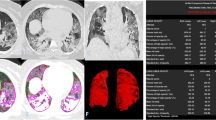Abstract
As an interdisciplinary subject of medicine and artificial intelligence, intelligent diagnosis and treatment has received extensive attention. The standardization of Chinese medicine (CM) diagnosis has been always a bottleneck in the modernization and globalization of CM. Studying the application technology of artificial intelligence in CM and solving the problems is an urgent need for the development of modern CM in the era of artificial intelligence. Taking the pneumonia with dyspnea and cough in CM as an example, this article gives an overview of intelligent medical technology and application development, brings forward the present technical problems faced and the new advances in intelligent technology on CM diagnosis and treatment.
Similar content being viewed by others
References
Alpaydin E, ed. Introduction to machine learning. Cambridge: MIT Press; 2009:4.
Bishop CM, ed. Pattern recognition and machine learning. Heidelberg: Springer; 2006.
Deo RC. Machine learning in medicine. Circulation 2015;132:1920–1930.
Adlassnig KP. A fuzzy logical model of computer-assisted medical diagnosis. Methods Informat Med 1980;19:141–148.
Curiac DI, Vasile G, Banias O, Volosencu C, Albu A. Bayesian network model for diagnosis of psychiatric diseases. Proceedings of the ITI 2009 31st International Conference on Information Technology Interfaces; 2009 June 22–25; Cavtat/Dubrovnik, Croatia. 2009:61–66.
Amato F, González-Hernández JL, Havel J. Artificial neural networks combined with experimental design: a “soft” approach for chemical kinetics. Talanta 2012;93:72–78.
Hannun AY, Rajpurkar P, Haghpanahi M, Tison GH, Bourn C, Turakhia MP, et al. Cardiologist-level arrhythmia detection and classification in ambulatory electrocardiograms using a deep neural network. Nature Med 2019;25:65.
Esteva A, Robicquet A, Ramsundar B, Kuleshov V, DePristo M, Chou K, et al. A guide to deep learning in healthcare. Nature Med 2019;25:24.
Attia ZI, Kapa S, Lopez-Jimenez F, McKie PM, Ladewig DJ, Satam G, et al. Screening for cardiac contractile dysfunction using an artificial intelligence-enabled electrocardiogram. Nature Med 2019;25:70.
Gurovich Y, Hanani Y, Bar O, Nadav G, Fleischer N, Gelbman D, et al. Identifying facial phenotypes of genetic disorders using deep learning. Nature Med 2019;25:60.
Topol EJ. High-performance medicine: the convergence of human and artificial intelligence. Nature Med 2019;25:44.
https://www.computerworld.com/article/2909534/ibm-launches-watson-health-global-analytics-cloud.html.
Leung EL, Wong VK, Jiang ZH, Li T, Liu L. Integrated network-based medicine: the role of traditional Chinese medicine in developing a new generation of medicine. Science 2014;346:S16–S18.
Tu Y. The discovery of artemisinin (qinghaosu) and gifts from Chinese medicine. Nature Med 2011;17:1217.
Chan M. Supporting the integration and modernization of traditional medicine. Science 2014;346:S2–S2.
Chen W, Zhang X, Wang T, Yang B, Li Y. Opinion-aware knowledge graph for political ideology detection. Proceedings of the Twenty-Sixth International Joint Conference on Artificial Intelligence (IJCAI); 2017 Aug 19–25; Melbourne, Australia. 2017:3647–3653.
Han Y, Chen W, Xiong XL, Li Q, Qiu Z, Wang TJ. Wide & deep learning for improving named entity recognition via text-aware named entity normalization. Proceedings of The AAAI-19 Workshop on Recommender Systems and Natural Language Processing (RECNLP), Thirty-Third AAAI Conference on Artificial Intelligence (AAAI 19); 2019 Jan 28; Honolulu, Hawaii, USA.
Author information
Authors and Affiliations
Corresponding author
Additional information
Supporled by the National Nature Science Fundation of China (No. 81774138)
Rights and permissions
About this article
Cite this article
Guo, Y., Ren, X., Chen, Yx. et al. Artificial Intelligence Meets Chinese Medicine. Chin. J. Integr. Med. 25, 648–653 (2019). https://doi.org/10.1007/s11655-019-3169-5
Accepted:
Published:
Issue Date:
DOI: https://doi.org/10.1007/s11655-019-3169-5




